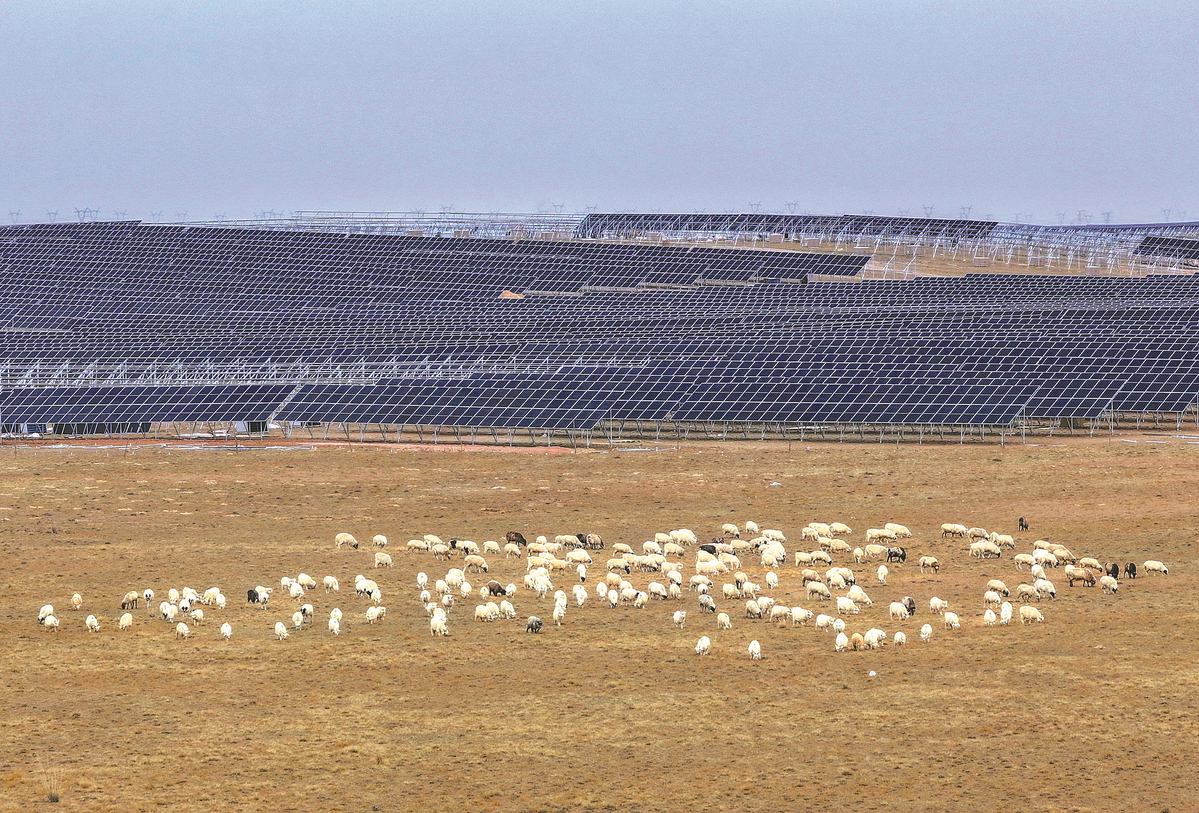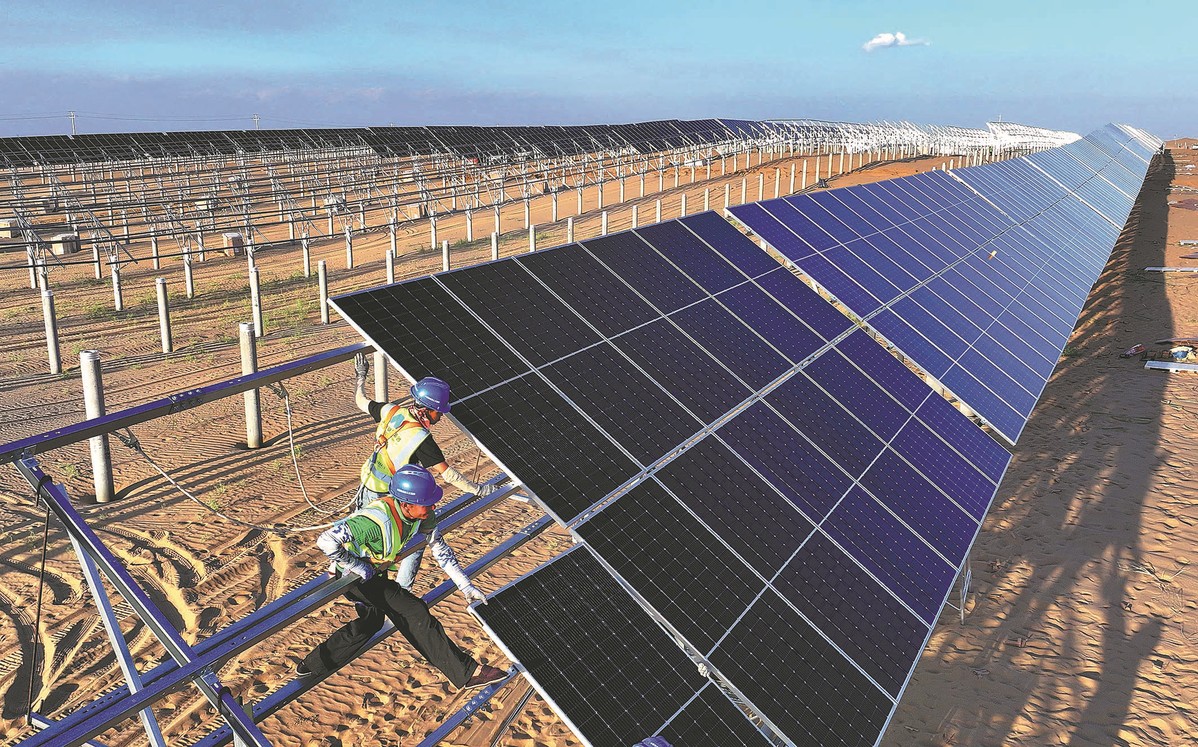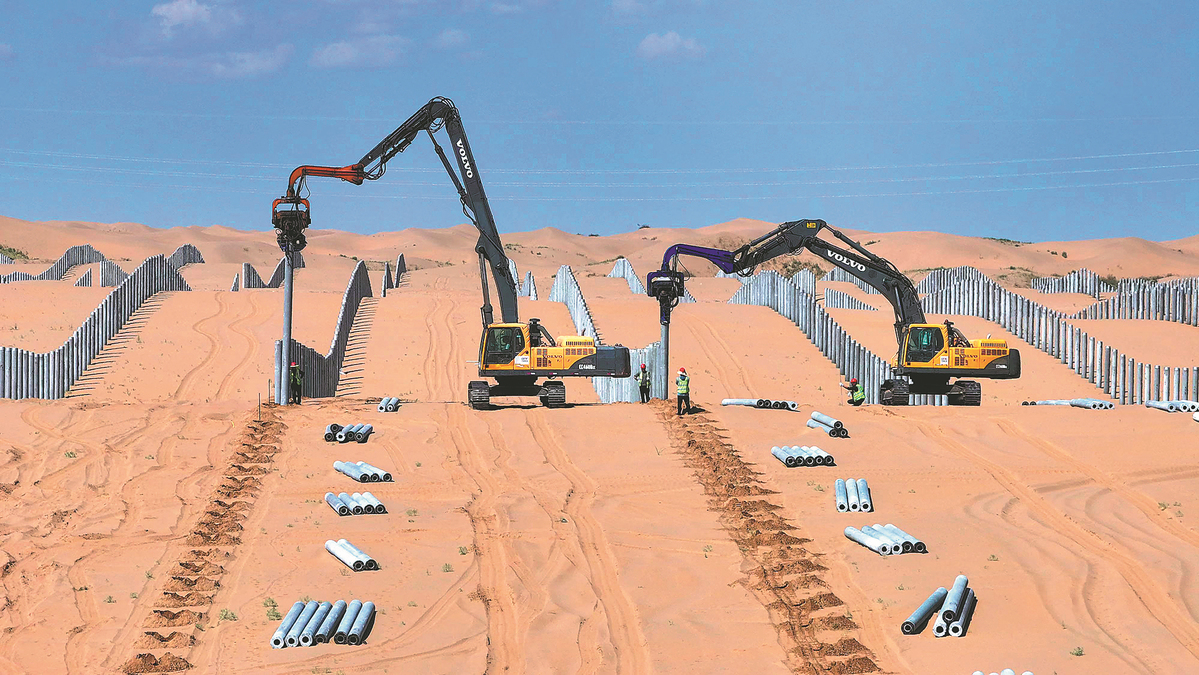'Solar Great Wall' could power Beijing by 2030
China Daily, November 12, 2024 Adjust font size:

Ordos in the Inner Mongolia autonomous region is advancing an ambitious initiative known as the "Solar Great Wall", aiming to combine the development of renewable energy with efforts to combat desertification, according to local authorities.
This gargantuan project, spanning 400 kilometers in length with an average width of 5 km, not only promises to supply sustainable electricity to Beijing and its surrounding area, but also stands to make a substantial contribution to the preservation of the Yellow River, a mother river of the Chinese nation.
With a total installed capacity of 100 million kilowatts, the project launched earlier this year is expected to generate roughly 180 billion kilowatt-hours of electricity per year by 2030 when it is completed, the Ordos energy administration said.
For reference as to how much energy that actually is, last year Beijing consumed 135.8 billion kWh of electricity.
Located on the south bank of the Yellow River and the northern edge of the Kubuqi Desert, the seventh-largest desert in China, the project will also help prevent soil erosion and thus reduce sediment entering the Yellow River. Overall, it will help treat almost 27 million hectares of desert, the administration added.

In an interview with China Daily, Li Kai, an official with the energy administration of Dalad Banner, stressed the huge economic and ecological benefits the project is expected to generate.
Some 133 km of the "Solar Great Wall" will be built in the banner, and the average width of the section is designed to be 25 km, the official said. Thanks to the project, Dalad's total renewable energy capacity will reach 19 million kW by the end of this decade.
This achievement will result in an annual green power output of 38 billion kWh, leading to savings equivalent to nearly 12.6 million metric tons of standard coal and a reduction in carbon dioxide emissions by approximately 31.3 million tons, Li said.
By 2030, he said Dalad will be able to transmit 48 billion kWh of green electricity annually to the Beijing-Tianjin-Hebei region via an ultra-high-voltage electricity transmission line that is under construction.
While solar panels can directly contribute to desertification control by serving as windbreaks and sand fixers, as well as by providing shade to reduce the evaporation of soil moisture, 2,400 hectares of commercial crops will also be planted beneath the panels to help treat the desert, Li added.
The initiative of utilizing the space under the panels underscores the local government's commitment to achieving a symbiotic relationship between ecological preservation and economic advancement, he stressed.

"All of the projects are invested in by State-owned companies, some of which are centrally administrated ones, and so local governments don't have to make any investment at all," he said.
Li also highlighted measures the authorities in Dalad have rolled out to pave the way for the implementation of the huge project.
The local government has coordinated on-site approval sessions that have brought together officials from involved departments. Additionally, they have designated special officials to provide essential support in managing all official procedures across various stages, he noted.
"In total, approximately 50,000 job opportunities will be generated by 2030, with individuals in these roles experiencing an average annual income growth exceeding 20,000 yuan ($2,815)," he said.